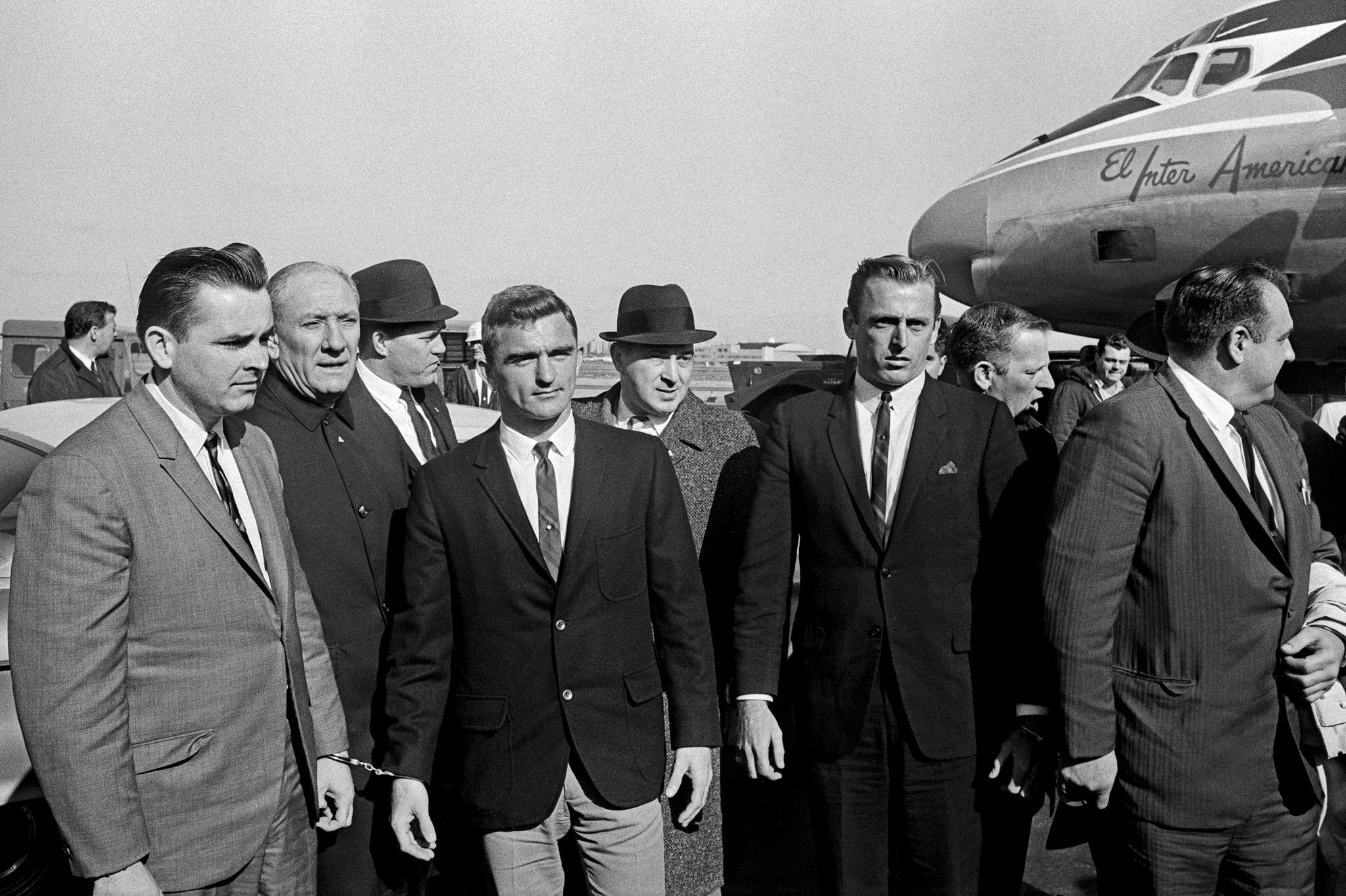Into NYC folklore? Check out this NYT piece.
A detective dusts for fingerprints after several precious gems, including the Star of India, were stolen from the Museum of Natural History in 1964. The window below is the one believed to have been used by the thieves for entry. Credit | Arthur Brower/The New York Times
For a few months in 1964, “Murph the Surf” and his crew became folk heroes when they looted the Hall of Gems from the American Museum of Natural History.
This excerpt is from a piece originally published By Corey Kilgannon | Oct. 17, 2019 | Updated Oct. 18, 2019, 3:47 a.m. ET
For its 150th anniversary, the American Museum of Natural History is celebrating its many historic moments, from its 1869 founding, to the 1902 discovery of the first T-Rex skeleton, to the creation of the Teddy Roosevelt statue erected out front in 1940.
One milestone not on that list: the biggest jewel heist in New York history, when the Star of India, a 563-carat sapphire the size of a golf ball, was snatched from its display case, along with the rare Eagle Diamond, the DeLong Star Ruby and some 20 other precious gems from a collection donated to the museum by J.P. Morgan.
For several months beginning in October 1964, the city was transfixed by the brazen robbery that the tabloids immediately labeled the heist of the century.
The culprits were not ordinary thieves. They were sharply dressed surfer dudes on a spree that took them from their base in Miami Beach up to their lair in New York, a penthouse suite in a Manhattan hotel. They were caught within two days of the crime, but the jewels remained missing. After a wild escapade in Miami — an unorthodox excursion involving a rented convertible — many of the gems were recovered, including the Star of India, which was promptly put on solo display in the museum’s main floor rotunda — this time, with its own security guard and safe.
When the museum reopens the gem wing next year after a long renovation, the Star of India will be there.
Roberto Lebron, a current spokesman for the museum, would not comment on security aspects before or after the heist, other than to say, “The museum certainly learned a thing or two from that episode, which occurred more than 50 years ago.”
The call came in around 10 a.m. to the 20th Precinct on the Upper West Side. There was a break-in at the museum.
Detective Jack McNally and his colleagues headed right over, arriving to find the Hall of Gems a total mess, with numerous display cases shattered, the cabinets broken and their contents pillaged.
“We were thinking it was some tiny thing,” recalled Mr. McNally, who is now 85 and retired and living in a beach community on Long Island. “The whole place was a wreck.”
James A. Oliver, the director of the Museum of Natural History, inspecting the damage in the Hall of Gems. Credit | Arthur Brower/The New York Times
Within an hour, the press was swarming the museum.
If the Star of India was the story’s headline, museum security was the punch line. The alarms on the hall’s display cases had long stopped working, including the trip alarm on the Star of India. Because of budget cuts, the museum’s security staff was reduced. Of the eight guards on duty that night to cover the 18-building museum complex, it was the responsibility of one aging guard to sporadically shine a flashlight into the Hall of Gems during his rounds.
The museum put the stolen gems’ value at $410,000 — about $3.3 million today. But as historical artifacts, they were irreplaceable and considered priceless.
“We were all dumbfounded that there was no alarm system — that was extremely unusual,” Mr. McNally said. “There was no security at all.”
“We asked the curators for a description of the stuff that was taken, and they really didn’t have solid inventory,” he added.
The three thieves — Jack Murphy, Allan Kuhn and Roger Clark — were tan, fit beach boys in their 20s, full of swagger and Rat Pack chic. They had driven up from Miami several weeks earlier in a white Cadillac and had settled into a penthouse suite at the Cambridge House Hotel on West 86th Street, where they threw constant parties.
All the while, they were pulling off smaller robberies around town of hotel rooms and wealthy bar patrons, but it was hard to ignore the museum’s world-class jewel exhibit a few blocks away.
While Mr. Kuhn was eager for the museum heist, Mr. Murphy recalled being initially leery of the caper. “We were turning heads, and too many people in town knew who we were,” said Mr. Murphy, who is 82 and living in Florida.
In scouting the hall, they realized that, for a skilled thief with the chutzpah to break in, the jewels were practically begging to be stolen, recalled Mr. Murphy in a recent interview.
“Allan said he could hear the jewels talking,” he recalled. “He said, ‘The jewels are saying, ‘Take us to Miami.’ So I said, ‘Well, let’s take them to Miami.’”
From left, Detective Jack McNally, Allan Kuhn and Jack Murphy, just arrived from Florida, at Kennedy International Airport. Credit | Patrick Burns/The New York Times





